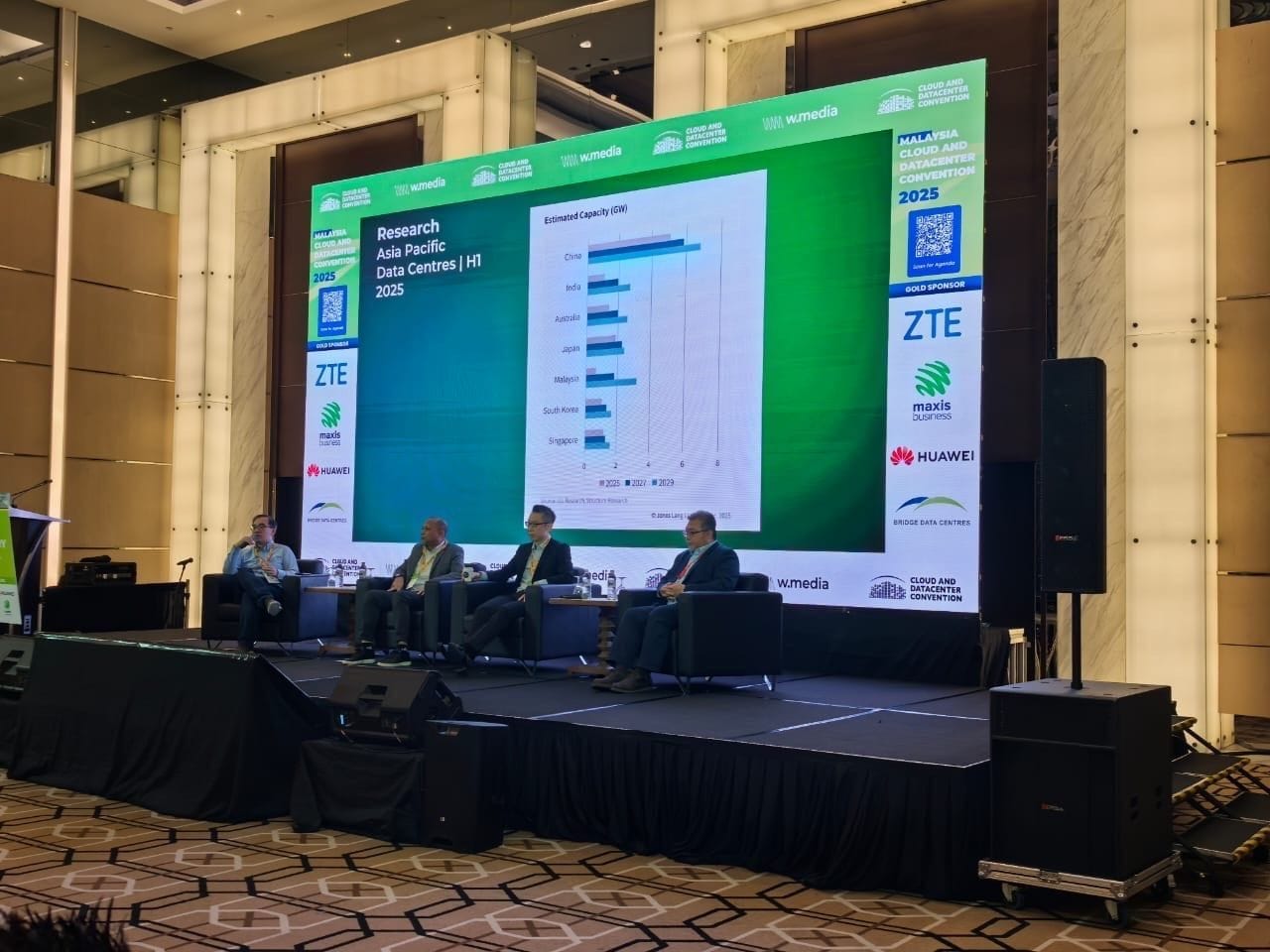Malaysia's digital crossroads: Beyond the data centre boom
The vision is there. The momentum is there. But execution will determine everything.
The Malaysia data centre surge over the last three years has no equivalent. I’ve previously argued we’re witnessing a once-in-a-generation phenomenon. One after another, top public cloud players and global data centre giants have announced and built massive campuses, mostly in Johor - which in 2021 had only a single 10MW data centre.
Even as I’ve occasionally expressed skepticism about this incredible growth, month after month, it continues to belie expectations. After attending the w.media Malaysia Cloud & Datacenter Convention (CDC) at the Connexion Conference & Event Centre on Thursday, I’ve been reflecting on the conversations I had and the road ahead.
How is Malaysia attempting to turn its fortuitous data centre boom into a lasting legacy?
The Johor phenomenon

First, let’s look at what’s happening with data centre growth in Malaysia. As I shared on Thursday’s opening panel, JLL data indicates Malaysia will overtake Singapore and South Korea in data centre capacity by 2027, and every other major Asia Pacific (APAC) market by 2029. China has more data centres, but it also has 1.4 billion people.
Is this phenomenal growth a bubble, like the AI bubble in Western nations? As of the first half of 2025, Knight Frank says Johor has a vacancy rate of just 1.1 per cent. That’s lower than Singapore’s, which few would disagree is severely constrained and running at saturation.
As my panellists observed, today’s astounding growth isn’t luck or magic, but the result of more than a decade of work championing data centre investments in Malaysia. When opportunity knocked after the COVID pandemic, spurred by generative AI, the solid base of existing data centres and the knowhow of serving this niche industry became the catalyst for hypergrowth.
Of course, conditions have changed. The competitive environment that catalysed today’s growth no longer exists. Land prices have increased substantially, electricity and water tariffs have risen, and many tax exemptions are being rolled back.
These sharp cost increases have led several data centre operators to look further afield to places like Thailand. But at least some have since decided to return to Malaysia, driven by market economics. And from several off-the-record conversations, I learned many of the developments I caught wind of last year have moved forward. So yes, even more data centres are coming.
The infrastructure squeeze
Of course, you can’t build thousands of megawatts of data centres within years and expect nothing to change.
A lightning strike last week at a Melaka power plant triggered an automatic shutdown of the 2,242MW facility, causing localised outages across Peninsular Malaysia. Though rectified within hours, the incident underscored grid stress. According to The Edge Malaysia, a concurrent unplanned outage at the 1,000MW Tanjung Bin Energy coal plant in Johor exacerbated the situation by stressing the transmission and distribution network.
What struck me during further digging was how Peninsular Malaysia’s power reserve margin has shrunk from 38.6% at end-2022 to 24% as of December 2024. While still considered healthy, it explains the urgency to boost generation capacity.
But it’s not just about building more plants. Malaysia faces a resource challenge. At current extraction rates, Malaysia’s oil reserves could last another 10 to 15 years, potentially declining around 2035. Gas reserves could sustain production beyond 2040, due to new offshore developments. But growing demand means that Malaysia, currently the world’s fifth-largest LNG exporter, could start importing it within four to five years, according to Petronas’s head at the Energy Asia conference in June.
Indeed, the country is set to build 50% more gas-fired power by 2030, adding 6-8GW of generation capacity to address growing electricity consumption driven by data centres, according to TNB’s CEO. Overall, total power consumption in Malaysia is on track to increase 30% by 2030. Depending on who you ask, that’s an additional 14 - 15 GW of generation capacity needed over the next five years, with a big chunk of demand coming from data centres.
Beyond the data halls

Perhaps what struck me most was Malaysia’s efforts to leverage this opportunity to build a robust ecosystem beyond digital infrastructure. MDEC’s Wan Murdani alluded to this during my panel discussion.
Here’s what surprised me: reviewing my notes from his July 2024 presentation in Singapore, I realized he was already outlining this vision - growing renewables and supply chain ecosystems, including semiconductors and data centre equipment manufacturing. I wrote about it then but didn’t grasp its full significance.
Now, a year later, I’m seeing it materialise. I met at least two born-in-Malaysia data centre equipment suppliers that have successfully ridden this growth wave. One was recently acquired by a Fortune 500 European firm, while the other is expanding beyond Malaysia.
Since then, the Johor-Singapore Special Economic Zone was signed on 6 January 2025, envisioned to strengthen cross-border economic integration in various sectors including the digital economy - potentially spurring even more data centres in Johor by strengthening the supply chain.
Many countries have tried to leverage a boom to build lasting industrial capability. Few succeed. The difference always comes down to execution - the unglamorous work of skills training, supply chain development, and creating genuine competitive advantages beyond cost.
Can Malaysia transform this data centre boom into lasting industrial capability before the window closes? The vision is there. The momentum is there. But between vision and reality lies the hardest part: execution at scale. That’s what will determine whether this becomes a lasting legacy or just another boom that faded.
A version of this first appeared in the commentary of my free Tech Stories newsletter that goes out every Sunday. This includes a digest of other stories that I wrote this week. To get it in your inbox, sign up here.



